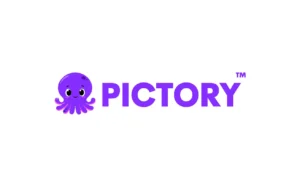Artificial Intelligence (AI) has made remarkable progress, sparking a growing discussion about ChatGPT vs AI language models. As one of the most recognized creations by OpenAI, ChatGPT has earned praise for its natural language generation, versatility, and widespread impact across industries. However, with rapid advancements in AI technology and the rise of strong competitors, the question remains: Does ChatGPT still lead the way in the world of AI language models?
A Brief Look Back: The Rise of ChatGPT
ChatGPT made headlines for its groundbreaking ability to generate coherent and contextually relevant text. Built on OpenAI’s GPT (Generative Pre-trained Transformer) architecture, it has undergone significant evolution since its early versions, with GPT-4 being the latest iteration. Its applications range from customer support and content creation to education and creative writing. ChatGPT’s accessibility and impressive language capabilities catapulted it into mainstream recognition, establishing it as a household name in AI.
What Makes ChatGPT a Titan?
- Natural Language Understanding and Generation
ChatGPT is known for its ability to understand nuanced queries and generate human-like responses. Its capacity to adapt its tone and style makes it suitable for various tasks, from casual conversation to technical writing. - Wide Range of Applications
From automating customer service to aiding software development with code generation, ChatGPT has proved its versatility. It’s also a valuable tool for brainstorming, summarizing documents, and providing insights across fields like healthcare, education, and finance. - User-Focused Development
OpenAI’s iterative updates and feedback-driven improvements have kept ChatGPT relevant. For example, the addition of features like custom instructions allows users to tailor the model’s responses to their preferences, enhancing its usability. - Integration and Scalability
ChatGPT is easily integrated into various platforms and workflows through APIs, making it an essential component for businesses looking to automate processes or enhance user interaction.
The Rise of Competitors
While ChatGPT has maintained its position as a leader, competition has grown significantly. Companies like Google (with Bard), Anthropic (with Claude), and others have entered the AI language model space, each bringing unique capabilities to the table.
- Google Bard
Google Bard, powered by Google’s LaMDA model, focuses on providing up-to-date and internet-connected responses. Unlike ChatGPT, Bard integrates real-time search capabilities, giving it an edge in delivering current information. - Claude by Anthropic
Claude, developed by Anthropic, emphasizes safety and alignment with human values. It’s designed to be more cautious in generating responses, making it appealing for use cases where accuracy and ethical considerations are paramount. - Emerging Open-Source Models
Open-source models like Meta’s LLaMA (Large Language Model Meta AI) are gaining traction among developers due to their flexibility and transparency. These models offer customizability that proprietary systems like ChatGPT cannot match out of the box.
Challenges for ChatGPT
- Limitations in Real-Time Knowledge
Unlike competitors like Bard, ChatGPT’s reliance on pre-trained knowledge limits its ability to provide the latest information. Although OpenAI integrates plugins and browsing features in some versions, this functionality is not universally available. - Ethical Concerns
Like other AI models, ChatGPT faces challenges regarding misinformation, bias, and misuse. OpenAI has implemented safeguards, but these issues remain points of criticism. - Cost and Accessibility
While ChatGPT offers free access to its basic version, advanced features like GPT-4 come with a subscription cost. This pricing model may deter some users, particularly as more affordable or open-source alternatives emerge.
Why ChatGPT Still Stands Out
Despite the growing competition and challenges, ChatGPT continues to dominate for several reasons:
- Refined User Experience
OpenAI’s focus on creating an intuitive interface and easy-to-use features has made ChatGPT a go-to choice for users ranging from students to professionals. - Extensive Ecosystem
ChatGPT benefits from OpenAI’s ecosystem, including integrations with tools like DALL·E for image generation and Codex for programming tasks. This all-in-one approach makes it more versatile than many competitors. - Trust and Brand Recognition
OpenAI’s reputation as a pioneer in AI has solidified ChatGPT’s place in the market. Its widespread adoption and integration into platforms like Microsoft Teams and Azure have further strengthened its presence.
The Future of ChatGPT vs AI Language Models
To stay ahead in the ChatGPT vs AI language models race, OpenAI must continue to push the boundaries of innovation. Priorities include enhancing real-time capabilities, addressing ethical concerns, and improving cost accessibility. With ongoing developments like multimodal capabilities and an expanding plugin ecosystem, OpenAI demonstrates its commitment to keeping ChatGPT at the forefront of the competitive AI landscape.
Final Thoughts
Although rivals are closing the gap, ChatGPT remains a dominant force in the debate of ChatGPT vs AI language models. Its advanced language generation, intuitive design, and diverse applications make it highly relevant in today’s AI world. As AI continues to evolve, this competition will fuel innovation, pushing ChatGPT and its competitors to reach new heights.
So, is ChatGPT still the titan in the battle of AI language models? For now, the answer is a confident yes—but the AI race is far from over.







